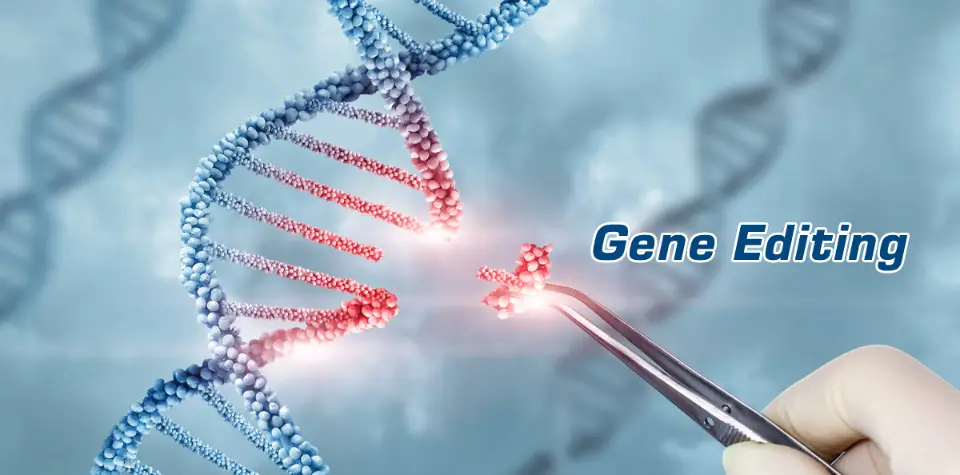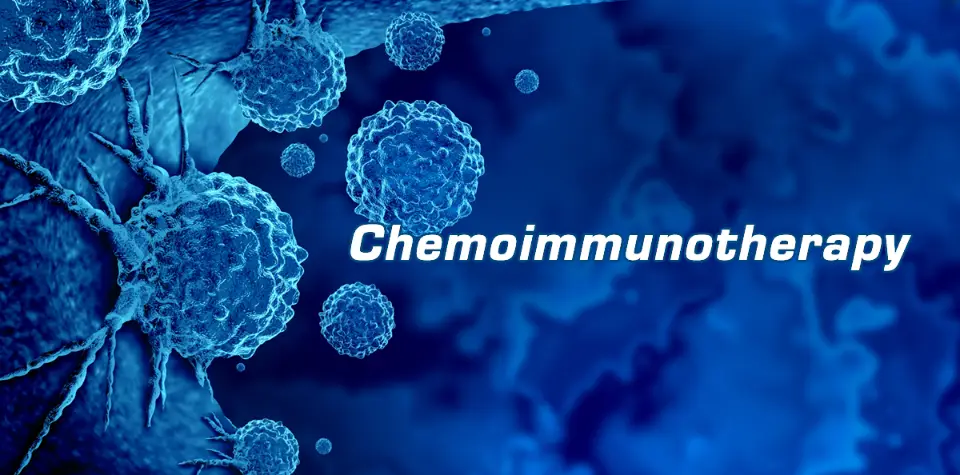Latest Trends in Curing Cancer: Promising Innovations in Treatment

As one of the leading causes of death worldwide that affects millions of people each year, cancer remains a major focus for scientists and researchers who are working hard to find better treatments and, ultimately, a cure. While traditional methods such as radiation, chemotherapy, and surgery have been the standard treatments of cancer, they often come with side effects and inconsistent outcomes. Along with the progression of medical research, scientists are coming forward with new treatments that can hopefully improve survival rates and quality of life for cancer patients. These approaches, including immunotherapy, gene editing, microbiome-based therapies, chemoimmunotherapy, and cancer vaccines, offer more precise targeting and damage reduction towards healthy cells. Such innovation might be able to ideally change the tide and reshape our fight against cancer.
Immunotherapy: Leveraging the Body’s Defense System
Immunotherapy has emerged as a revolutionary approach in cancer treatment, utilizing the body’s own immune system to fight the disease. Unlike traditional therapies with their direct attack towards cancer cells, immunotherapy enhances the immune system’s ability instead, allowing it to recognize and destroy cancer cells more effectively.
There are different types of immunotherapy:
- CAR T-Cell Therapy: One of the most common forms of immunotherapy, Chimeric Antigen Receptor (CAR) T-cell therapy involves the extraction of a patient’s T cells (a type of immune cell), and their modification in a lab to have better offensive power against cancer cells. The altered cells are then reinserted into the body. This therapy has been particularly successful in blood cancer treatment, such as leukemia and lymphoma, leading to long-term remission in some patients.
- Immune Checkpoint Inhibitors: ICIs work by targeting immunologic receptors on the surface of immune cells and boosting anti-cancer immune responses. It is done by blocking immune checkpoint proteins from binding with their partner proteins such as tumor cells, as the binding will prevent the T cells from killing the cancer. ICI treatment has been approved to treat different types of cancer, including breast, bladder, cervical, lung, and skin cancer.
- Monoclonal Antibodies: Also called therapeutic antibodies, they are lab-engineered proteins designed to target cancer cells, marking them for better visibility and destruction by the immune system. An example is rituximab, which binds to a protein called CD20 on B cells and some types of cancer cells.
- Cancer Treatment Vaccines: Unlike preventive vaccines that work against the causes of cancer, treatment vaccines help the immune system recognize cancer cells and strengthen its natural defense. These are currently being tested for prostate cancer and melanoma.
While immunotherapy has significantly shown promising results in breast, bladder, and colorectal cancer despite being less common than traditional treatments, there are still remaining challenges such as high costs, resistance and side effects on immunity. These therapies still require more refinement to further increase their accessibility and effectiveness for different types of cancer.
Gene Editing: The Role of CRISPR in Cancer Treatment

Gene editing technology, particularly CRISPR/Cas9, is garnering huge interest in the field of cancer research. Adapted from the naturally occurring gene editing system for immune defense in bacteria, CRISPR lets scientists make precise modifications to DNA sequences that will then target specific genetic mutations leading to the growth and spread of cancer. This technology also allows improvement in existing cancer therapies like CAR-T. For this method, Cas9 is the enzyme that is used most often, although other enzymes can also be incorporated.
CRISPR can also modify T cells more efficiently, therefore improving their ability to detect and kill cancer cells. Since some cancers are worsened by specific genetic mutations, CRISPR is able to potentially edit or deactivate these genes, stopping cancer growth before further spread. Knowing how a number of cancers grow resistant to treatment over time, CRISPR can also work against treatment resistance through identification and counteract development.
Despite the great promise gene editing holds, there are concerns about unintended genetic mutations, long-term effects, and ethical considerations regarding DNA modification. Researchers should develop more reliable methods to ensure treatment safety and minimize side effects in surrounding tissues to better unlock the potential of CRISPR/Cas9 treatment. Rigorous testing and research must take place before widespread clinical use, making certain that the benefits of this technology outweigh any possible risks.
Microbiome-Based Therapies: Gut Health and the Fight Against Cancer
The human gut microbiome consists of trillions of microbes of various species, holding an important role in a human’s aggregate health, which includes the immune function. Recent evidence has suggested how modifying the gut microbiome can augment cancer therapies, specifically immunotherapy.
Certain gut bacteria have been associated with better responses to immune checkpoint inhibitors, which possess several side effects such as resistance and adverse effects. The way they work is by allowing commensal microbes to interact with ICIs through alteration of pharmacodynamics, particularly immunomodulation, rather than pharmacokinetics. Ways to modulate gut microbiome through dietary changes, fecal microbiota transplants, and probiotics are currently being investigated. Such a personalized approach to this therapy can help doctors tailor cancer treatments to better suit a patient’s gut bacteria composition.
While microbiome-based therapies are still in the experimental phase, early results suggest they could become the future of oncology. Further research will focus on bacterial strain identification and the benefits in relation with the immune system.
Chemoimmunotherapy: A Powerful Combination

While chemotherapy has been a standard cancer treatment for a long time, it often brings about severe side effects that can weaken the immune system. Chemoimmunotherapy is a combination of chemotherapy and immunotherapy. The combination aims to enhance the efficacy of treatment by targeting cancerous cells and simultaneously promoting the immune system’s efficacy in fighting cancer.
Chemotherapy is meant to damage cancer cells, hence increasing their visibility to the immune system. This allows immunotherapy to work more efficiently. Several studies have shown remarkable results after implementing this combined therapy, with success in treating lung cancer and melanoma compared to solely doing chemotherapy.
Chemoimmunotherapy has made its mark with improved survival rates. However, more research needs to be done to optimize the dosage, time, and sequencing of the treatment. Side effects also need to be minimized and determining which patients will benefit the most from this approach is equally important.
Cancer Vaccines: Preventing and Treating Cancer
Similar to immunotherapy, cancer vaccines aim to prevent cancer development or relapse by immune system stimulation against cancer cells. The exciting area of research consists of two types of vaccines:
- Preventive Vaccines: This is known as the more conventional vaccine type that supports the body’s natural defense mechanism against bacteria and viruses. There are two approved preventive vaccines as of now, HPV vaccine, which protects against cervical cancer, and the hepatitis vaccine that reduces the risk of liver cancer.
- Treatment Vaccines: Also known as therapeutic vaccines, current clinical trials are testing vaccines for breast cancer, melanoma, and prostate cancer. These vaccines train the immune system to recognize cancer cells and protect the body from damaged or abnormal cells through exposure to molecules called antigens.
Reliable Support in Cancer Therapy Innovations
The fight against cancer is undergoing rapid advancements, with groundbreaking treatments reshaping oncology. Immunotherapy, gene editing, microbiome-based therapies, chemoimmunotherapy, and cancer vaccines offer more targeted, effective, and personalized approaches to treatment. While challenges remain, including accessibility, cost, and potential side effects, ongoing research and clinical trials are paving the way for a future where cancer treatments are more precise, less toxic, and personalized for patients. These latest trends serve as new hope for the field of medicine, for a world where cancer is no longer a life-threatening killer.
The need for safety, reliability, and precision is more critical than ever and Esco is here to empower that mission.
Labculture® G4 Class II Type A2 Biological Safety Cabinet
Handling high-risk samples is made efficient and secure with the Labculture® G4 Class II Type A2, with its ergonomic work zone and bright illumination for precise handling. Versatile with three different sash height openings (8”, 10”, and 12”), the biosafety cabinet supports advanced control and monitoring.

Features:
- 7” touchscreen controller with airflow monitor
- Smartphone-like interface with user guide
- Ergonomic and easy-to-clean cGMP design
- Built-in Tray Rods for cleaning and Cable Port
- Isocide™ antimicrobial powder coating
- ULPA filter, 10x more efficient than HEPA filter
- Self-Adjusting ECM blower, for stable airflow
- STA stand with caster and leveling feet combo
CelCulture® CO2 Incubator
Perfect conditions for delicate cell lines and tissue cultivation can be supported by the reliably-designed CelCulture® CO2 Incubator and its robust contamination control. Offering various options and easing operations, the intuitive incubator aids the exploration of revolutionary therapies.

Features:
- 7” touchscreen controller with smart event logger
- Fast temperature and CO2 recovery in 5 minutes
- Single-beam, dual-wavelength, and drift-free IR sensor
- ULPA filtration for ISO Class 5 chamber air quality
- FDA-listed, Class 2, 510k exempt medical device
- Perforated stainless steel shelving to improve uniformity
- Isocide™ antimicrobial powder coating exterior
References
Cancer Vaccines | Memorial Sloan Kettering Cancer Center. (n.d.). Www.mskcc.org. https://www.mskcc.org/cancer-care/diagnosis-treatment/cancer-treatments/immunotherapy/cancer-vaccines
Chehelgerdi, M., Chehelgerdi, M., Khorramian-Ghahfarokhi, M., Shafieizadeh, M., Mahmoudi, E., Eskandari, F., Rashidi, M., Arshi, A., & Mokhtari-Farsani, A. (2024). Comprehensive review of CRISPR-based gene editing: mechanisms, challenges, and applications in cancer therapy. Molecular Cancer, 23(1). https://doi.org/10.1186/s12943-023-01925-5
National Cancer Institute. (2019a, September 24). Cancer Treatment Vaccines – Immunotherapy. National Cancer Institute; Cancer.gov. https://www.cancer.gov/about-cancer/treatment/types/immunotherapy/cancer-treatment-vaccines
National Cancer Institute. (2019b, September 24). Immunotherapy to Treat Cancer. National Cancer Institute; Cancer.gov. https://www.cancer.gov/about-cancer/treatment/types/immunotherapy
National Cancer Institute. (2019c, September 24). Monoclonal Antibodies. National Cancer Institute; Cancer.gov. https://www.cancer.gov/about-cancer/treatment/types/immunotherapy/monoclonal-antibodies
National Cancer Institute. (2022a, March 10). CAR T cells: Engineering immune cells to treat cancer. National Cancer Institute; Cancer.gov. https://www.cancer.gov/about-cancer/treatment/research/car-t-cells
National Cancer Institute. (2022b, April 7).Immune Checkpoint Inhibitors.National Cancer Institute; Cancer.gov. https://www.cancer.gov/about-cancer/treatment/types/immunotherapy/checkpoint-inhibitors
National Library of Medicine. (2022, March 22). What Are Genome Editing and CRISPR-Cas9? MedlinePlus. https://medlineplus.gov/genetics/understanding/genomicresearch/genomeediting/
Sordo-Bahamonde, C., Seila Lorenzo-Herrero, A. P., Martínez-Pérez, A., Rodrigo, J. P., García-Pedrero, J. M., & González, S. (2023). Chemo-Immunotherapy: A New Trend in Cancer Treatment. Cancers, 15(11), 2912–2912. https://doi.org/10.3390/cancers15112912
Ting, N. L.-N., Lau, H. C.-H., & Yu, J. (2022). Cancer pharmacomicrobiomics: targeting microbiota to optimise cancer therapy outcomes. Gut, 71(7), 1412–1425. https://doi.org/10.1136/gutjnl-2021-326264
World Health Organization. (2025, February 3). Cancer. World Health Organization; World Health Organization. https://www.who.int/news-room/fact-sheets/detail/cancer